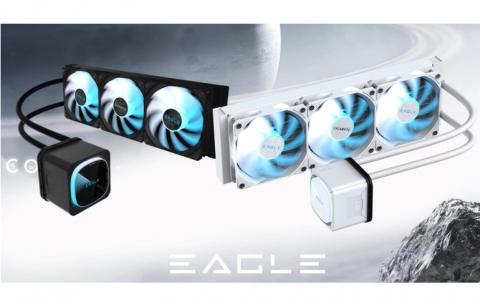
WHDI Releases 1.0 Specification
WHDI LLC today announced the completion and availability of the WHDI (Wireless Home Digital Interface) specification, a standard that enables full 1080p/60Hz HD with Deep Color at a distance of 100 feet and through walls.
WHDI is a standard for wireless, multi-room distribution of HD video, enabling manufacturers to deliver devices that can connect the increasing number of HD sources (CE, PC and mobile devices) to TVs around the home. The WHDI standard ensures that by purchasing products with the WHDI logo, consumers will be able to bring home devices from different manufacturers that will simply and directly connect to one another and deliver HD content and services without the need for complicated and expensive wiring.
"WHDI is the only solution that meets consumers? expectation and demand for a high-quality, multi-room HD wireless solution," said Leslie Chard, president of WHDI LLC. Adding that: "WHDI further enables two of the strongest trends in the A/V universe: the proliferation of HD content sources (now including the PC and mobile devices) and the increasing number of inexpensive, high quality displays placed throughout the home."
"Consumers want access to all of their HD content, whether on their laptop, mobile phone, STB or other device. WHDI enables manufacturers to create devices that easily deliver this value. No other wireless technology can provide this connectivity with the quality and robustness of WHDI," said Dr. Yoav Nissan-Cohen, Chairman and CEO of AMIMON.
WHDI will enable manufacturers to bring HD connectivity from PCs, laptops, and mobile computing devices, to wireless TVs. With WHDI consumers can easily bring HD content from the STB in the living room to other HDTVs in the home - consumers will be able to easily add a TV to their bedroom, kitchen, playroom, etc. without having to worry about wiring.
Streaming HD content at distances of 10 generally requires a high data throughput (greater than 3 Gb/s) and a large allocated frequency spectrum. A large amount spectrum is available on an unlicensed basis in many countries in the 60 GHz band. In addition, the transmit power (the combination of transmitter power and antenna gain) should be greater than 10 W of effective isotropic radiated power (EIRP).
WHDI (Wireless Home Digital Interface) is claimed to provide a high-quality, uncompressed wireless link that supports the delivery of equivalent video data rates of up to 3Gbps (including 1080p/60Hz) in a 40MHz channel in the 5GHz unlicensed band, conforming to worldwide 5GHz spectrum regulations. Range is beyond 100 feet, through walls, and latency is less than one millisecond. Additionally, WHDI relies on HDCP revision 2.0 to provide superior Hollywood-approved security and digital content protection.
Many wireless technologies have been proposed in the last three years, WiGig, UWB (Ultrawideband), WirelessHD, and WHDI (Wireless Home Digital Interface). However, none of them has been widely established on the market. WirelessHD delivers about 4Gbps for consumer applications, and WHDI promises about 3Gbps.
Wigig's specifications are defining a unified specification that will enable PCs, consumer electronics and handheld devices to communicate without wires at gigabit speeds within a typical room - more than 10 times faster than today's wireless LANs. WiGig technology will leverage the unlicensed 60 GHz spectrum and address performance and power requirements of many wireless devices and platforms, while coexisting with and complementing existing and future 802.11 wireless systems. The WiGig specification is expected to be available to member companies by the end of 2009.
"WHDI is the only solution that meets consumers? expectation and demand for a high-quality, multi-room HD wireless solution," said Leslie Chard, president of WHDI LLC. Adding that: "WHDI further enables two of the strongest trends in the A/V universe: the proliferation of HD content sources (now including the PC and mobile devices) and the increasing number of inexpensive, high quality displays placed throughout the home."
"Consumers want access to all of their HD content, whether on their laptop, mobile phone, STB or other device. WHDI enables manufacturers to create devices that easily deliver this value. No other wireless technology can provide this connectivity with the quality and robustness of WHDI," said Dr. Yoav Nissan-Cohen, Chairman and CEO of AMIMON.
WHDI will enable manufacturers to bring HD connectivity from PCs, laptops, and mobile computing devices, to wireless TVs. With WHDI consumers can easily bring HD content from the STB in the living room to other HDTVs in the home - consumers will be able to easily add a TV to their bedroom, kitchen, playroom, etc. without having to worry about wiring.
Streaming HD content at distances of 10 generally requires a high data throughput (greater than 3 Gb/s) and a large allocated frequency spectrum. A large amount spectrum is available on an unlicensed basis in many countries in the 60 GHz band. In addition, the transmit power (the combination of transmitter power and antenna gain) should be greater than 10 W of effective isotropic radiated power (EIRP).
WHDI (Wireless Home Digital Interface) is claimed to provide a high-quality, uncompressed wireless link that supports the delivery of equivalent video data rates of up to 3Gbps (including 1080p/60Hz) in a 40MHz channel in the 5GHz unlicensed band, conforming to worldwide 5GHz spectrum regulations. Range is beyond 100 feet, through walls, and latency is less than one millisecond. Additionally, WHDI relies on HDCP revision 2.0 to provide superior Hollywood-approved security and digital content protection.
Many wireless technologies have been proposed in the last three years, WiGig, UWB (Ultrawideband), WirelessHD, and WHDI (Wireless Home Digital Interface). However, none of them has been widely established on the market. WirelessHD delivers about 4Gbps for consumer applications, and WHDI promises about 3Gbps.
Wigig's specifications are defining a unified specification that will enable PCs, consumer electronics and handheld devices to communicate without wires at gigabit speeds within a typical room - more than 10 times faster than today's wireless LANs. WiGig technology will leverage the unlicensed 60 GHz spectrum and address performance and power requirements of many wireless devices and platforms, while coexisting with and complementing existing and future 802.11 wireless systems. The WiGig specification is expected to be available to member companies by the end of 2009.


















